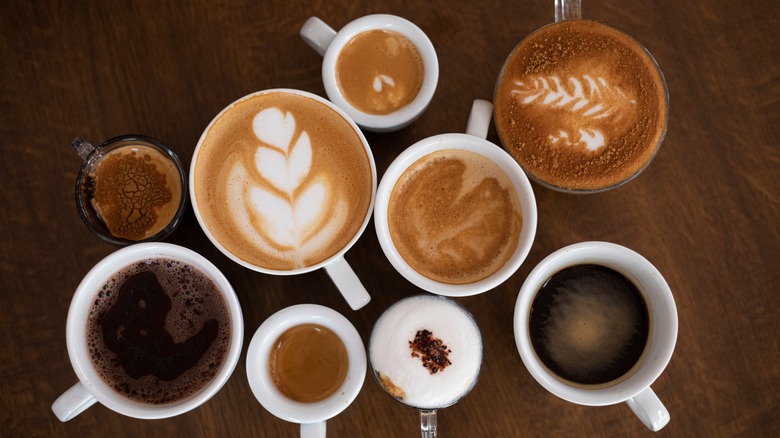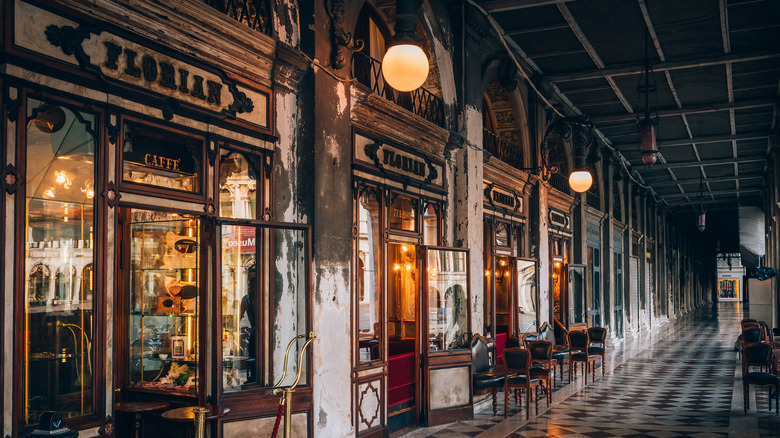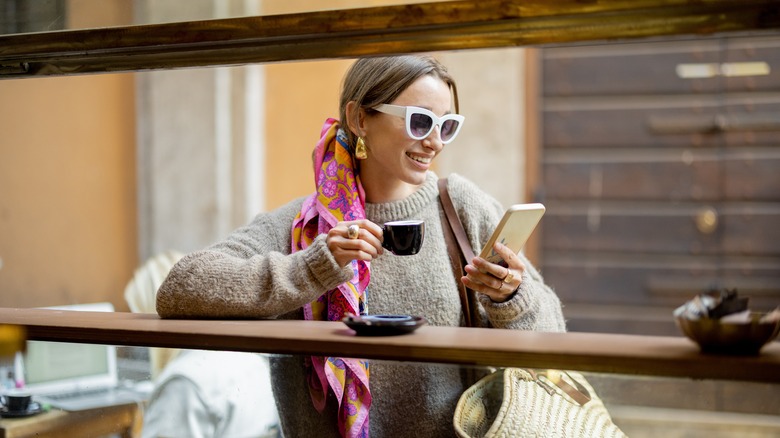Benvenuto in Italia! Your much-anticipated journey has officially begun. As you whizz through the airport, the vowels of the Italian language dance around you like a lively tarantella. The sounds blend into a symphony as exciting as an opera, marking the start of your adventure. While everything appears perfect, there is good news and bad news. The good news is that you’re finally in Italy; the bad news is that you’re dealing with some serious jet lag. Luckily, Rick Steve’s tour guide, Cameron Hewitt, has an ideal solution for you, and it involves a nice Italian caffè at the stand-up counter!
However, before we get caffeinated, let’s look into the facts about jet lag and coffee and whether they do, in fact, work together or against each other. Jet lag is a temporary sleep disorder that occurs when your body’s internal clock, or “circadian rhythm,” is disrupted by travel across multiple time zones. It can affect anyone who quickly travels long distances by air, particularly eastward across three or more time zones.
So, if you’re feeling apathy, irritability, sleepiness, and having difficulty concentrating, that is jet lag. To give you an idea, Italy’s timezone (UTC+2) is six hours ahead of New York (UTC-4). This means that when you arrive in Italy, it will feel later than it actually is. Consequently, you may find yourself feeling sleepier during the daytime than you usually would. In this case, Hewitt’s solution could not be more effective, especially if it’s done the Italian way.
The Italian coffee and how to order it

The history of Italian coffee goes back to the 16th century and Venice, one of the first European ports to import coffee beans. Imagine these first shipments arriving from distant lands and eventually becoming an integral part of Italian culture — not just a tasty beverage. In Italy, coffee is a blend of art and boundaries. The art lies in the roast, brew, and presentation of the coffee, while the boundaries are defined by the etiquette, timing, and setting of its consumption.
First, familiarize yourself with the language and customs of a coffee order. For starters, you never take a coffee to go, and Italians don’t use the word “espresso;” they say caffè. Other popular choices include “caffè americano” (espresso with water), “cappuccino” (espresso with steamed milk and froth, only to be consumed before 11 a.m. in Italy), and “caffè macchiato” (espresso with a little foamed milk).
Now that you’re prepared to order like a local, remember: in Italy, a “bar” is a “caffè.” Once there, Hewitt suggests asking for “al banco,” to order and have your coffee while standing up at the bar. It’ll be much cheaper and more authentic than sitting at a table (double or triple the price). After you have paid, you will be given a receipt, which you will take to the barista to prepare. Bellissimo! Now, just enjoy this moment of starting your trip in Italy like a local Italian while your jet lag subsides.
Popular caffès in popular Italian cities

The beauty of Italy is that every city has a special caffè worth checking out for your battle with jet lag. Out of respect for being the first in Italian coffee history, let’s start with Venice and the oldest caffé in Europe, Caffè Florian. It opened its doors in 1720 on St. Mark’s Square and has served icons like Queen Elizabeth II, Clint Eastwood, and Clark Gable. In Rome, Caffè Sant’Eustachio near the Pantheon has been famous since 1938 for its wood-fired roasting method and aqueduct-water-infused secret recipe for Gran Caffè.
As for Milan, Orsonero Coffee is a contemporary coffee shop offering specialty coffee in a minimalist setting. Founded by a Canadian-Italian couple, it caters to coffee aficionados looking for a modern twist on the traditional Italian espresso. In Florence, Caffè Gilli claims the title of the city’s oldest caffé and “living room of the city.” Located on Piazza della Repubblica since 1733, it’s treasured for unique Art Nouveau décor and artisanal pastries.
Lastly, Turin’s Caffè Al Bicerin, dating to the 18th century, is renowned for creating the Bicerin, a traditional drink blending espresso, chocolate, and milk. These caffès are not just places to enjoy the world’s best coffee; they are cultural landmarks that offer a glimpse into its very history. If you’re battling jet lag, be like Cameron Hewitt and take the opportunity to experience Italy’s finest while getting that jolt of energy with a caffè!

